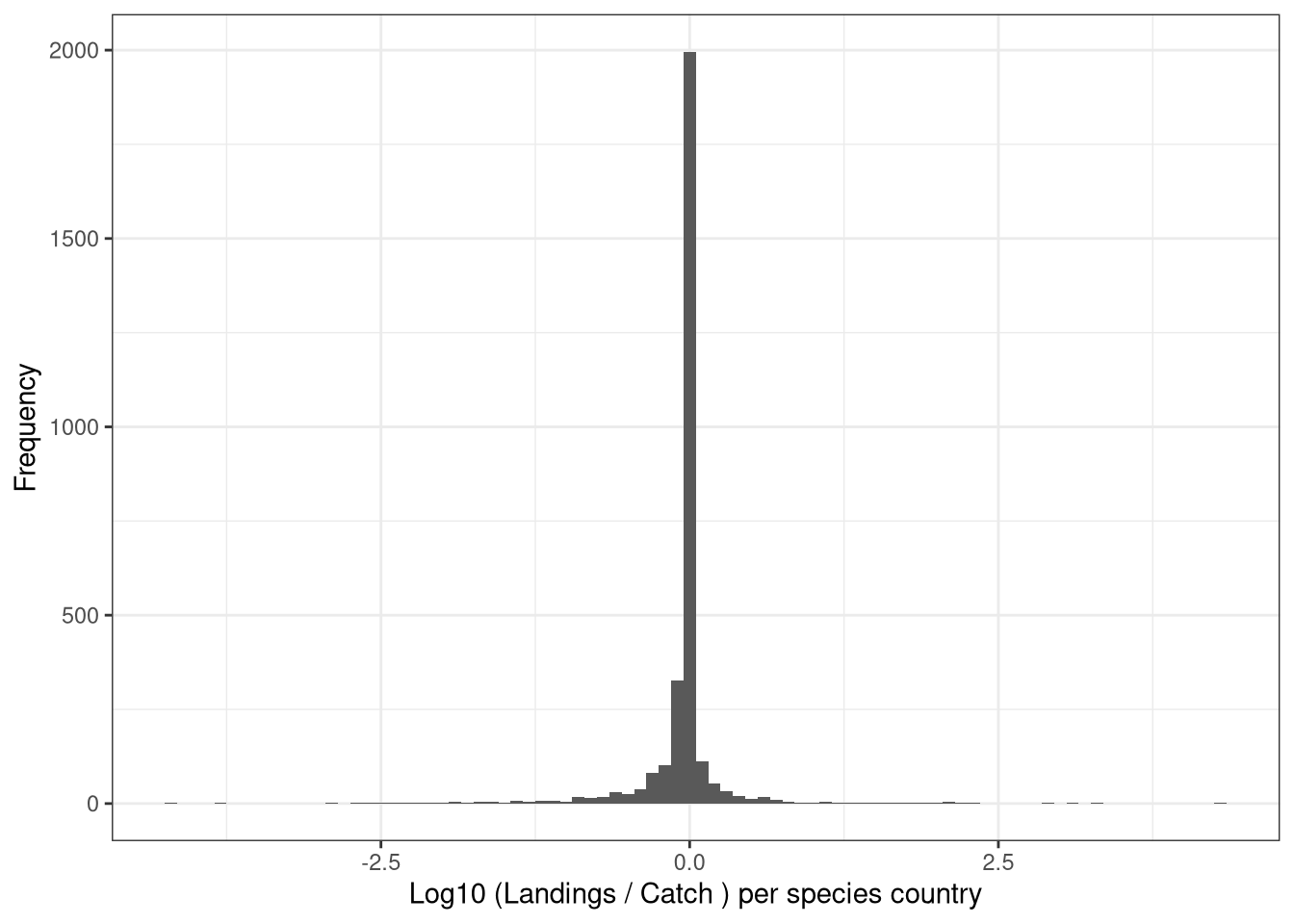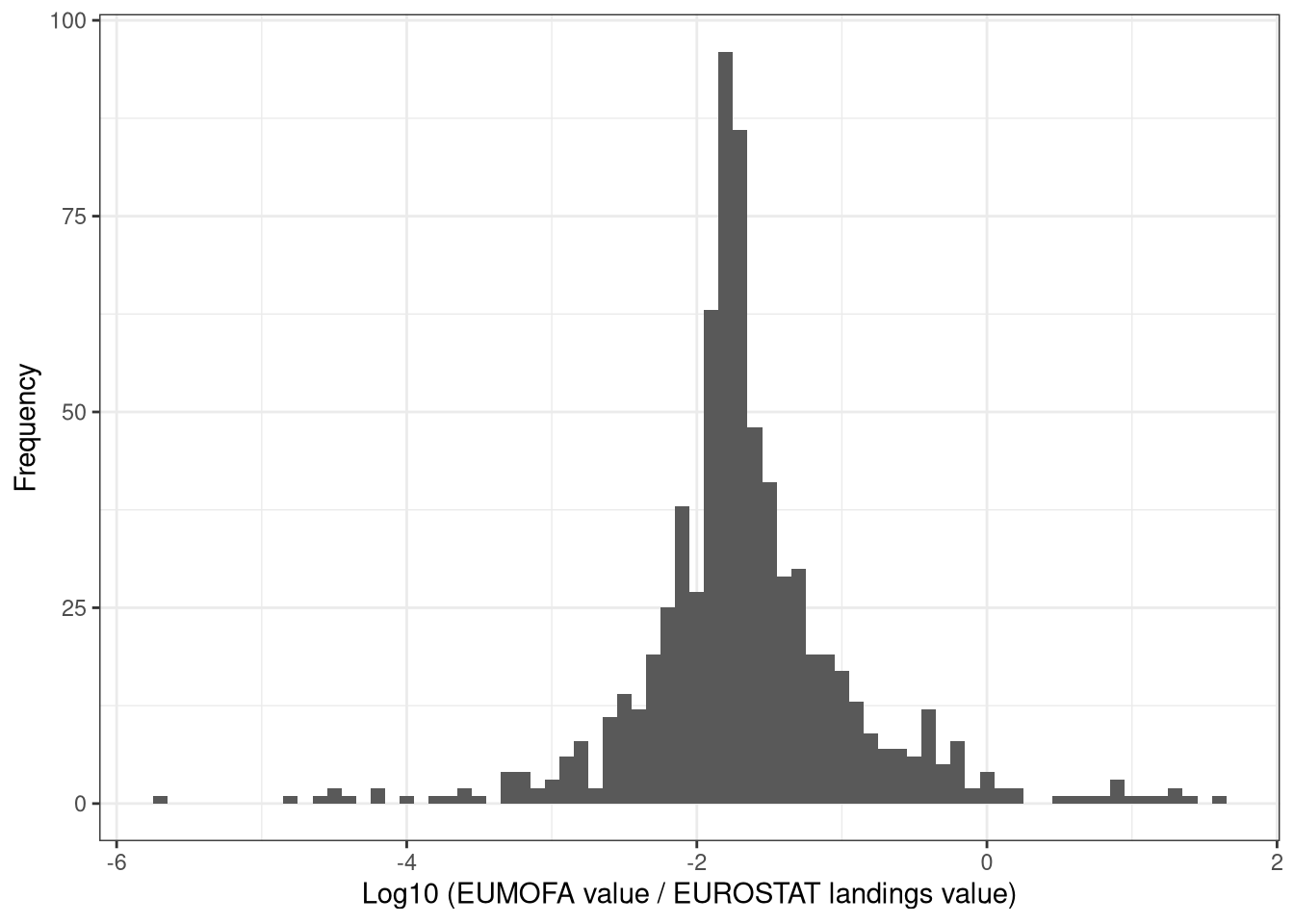6 Supplementary Material
6.1 Exemplar species
| FAO_3A_code | Scientific_name | FAO_EN | Area 27 | Area 37 | Notes | Weblink |
|---|---|---|---|---|---|---|
| BOR | Caproidae | Boarfishes nei | Capros aper | Capros aper | NA | NA |
| CDZ | Gadus spp | Northern cods nei | Gadus morhua | Gadus morhua | Cod do not occur in Mediterranean. MPA forced to Gadus morhua to be consistent | NA |
| DEX | Dentex spp | Dentex nei | Dentex dentex | Dentex dentex | NA | NA |
| GPX | Epinephelus spp | Groupers nei | Epinephelus marginatus | Epinephelus marginatus | NA | NA |
| HKX | Merluccius spp | Hakes nei | Merluccius merluccius | Merluccius merluccius | NA | NA |
| JAX | Trachurus spp | Jack and horse mackerels nei | Trachurus trachurus | Trachurus mediterraneus | NA | NA |
| LEZ | Lepidorhombus spp | Megrims nei | Lepidorhombus whiffiagonis | Lepidorhombus whiffiagonis | NA | NA |
| MNZ | Lophius spp | Monkfishes nei | Lophius piscatorius | Lophius budegassa | NA | NA |
| MUX | Mullus spp | Surmullets(=Red mullets) nei | Mullus surmuletus | Mullus surmuletus | NA | NA |
| OCM | Eledone spp | Horned and musky octopuses | Eledone cirrhosa | Eledone cirrhosa | NA | NA |
| OCZ | Octopus spp | Octopuses nei | Octopus vulgaris | Octopus vulgaris | NA | NA |
| PAX | Pagellus spp | Pandoras nei | Pagellus bogaraveo | Pagellus erythrinus | NA | NA |
| PEN | Penaeus spp | Penaeus shrimps nei | Melicertus kerathurus | Melicertus kerathurus | We are not fully sure, this species seems most likely.MPA replaced original “Penaeus kerathurus” suggested by John with its Melicertus kerathurus synonom | NA |
| PIC | Spicara spp | Picarels nei | Spicara smaris | Spicara smaris | NA | NA |
| RPN | Rapana spp | Sea snails | Rapana venosa | Rapana venosa | NA | NA |
| SAN | Ammodytes spp | Sandeels(=Sandlances) nei | Ammodytes marinus | Gymnammodytes cicerelus | NA | NA |
| SDV | Mustelus spp | Smooth-hounds nei | Mustelus asterias | Mustelus asterias | NA | NA |
| SKA | Raja spp | Raja rays nei | Raja clavata | Raja clavata | There are various species but thornback ray (R. clavata) is generally important or fairly important | NA |
| SOO | Solea spp | NA | Solea solea | Solea solea | NA | NA |
| SPI | Siganus spp | Spinefeet(=Rabbitfishes) nei | Siganus rivulatus | Siganus rivulatus | NA | NA |
| SQC | Loligo spp | Common squids nei | Loligo forbesii | Loligo vulgaris | NA | NA |
| SRG | Diplodus spp | Sargo breams nei | Diplodus vulgaris | Diplodus vulgaris | NA | NA |
| THS | Microchirus spp | Thickback soles nei | Microstomus kitt | Microstomus kitt | NA | NA |
| RED | Sebastes spp | Atlantic redfishes nei | Sebastes norvegicus | Sebastes norvegicus | NA | NA |
6.2 Alternative scientific names
| FAO_3A_code | Scientific_name | FAO_EN | Alt.sci.name |
|---|---|---|---|
| GUR | Aspitrigla cuculus | Red gurnard | Chelidonichthys cuculus |
| SWA | Diplodus sargus | White seabream | Diplodus sargus sargus |
| SQP | Loligo gahi | Patagonian squid | Doryteuthis gahi |
| MUT | Mullus barbatus | Red mullet | Mullus barbatus barbatus |
| TGS | Penaeus kerathurus | Caramote prawn | Melicertus kerathurus |
| SSH | Plesiopenaeus edwardsianus | Scarlet shrimp | Aristaeopsis edwardsiana |
| TUR | Psetta maxima | Turbot | Scophthalmus maximus |
| RJN | Raja naevus | Cuckoo ray | Leucoraja naevus |
| SOS | Solea lascaris | Sand sole | Pegusa lascaris |
| CTS | Venerupis pullastra | Pullet carpet shell | Venerupis corrugata |
| SQF | Loligo forbesi | NA | Loligo forbesii |
6.3 EUROSTAT internal consistency
Ideally there should be internal consistency within the EUROSTAT data on catches and landings. Here we check this.


6.4 EUMOFA vesus EUROSTAT Landings
Ideally, the EUMOFA data should also agree very closely with the EUROSTAT landings data. Here we check these assumptions.


6.5 Nearest Neighbour Assumption
In order to relate the landings in a region (EUMOFA data) to the hazard of a stock, we need to know where these landings were caught. We make the assumption here that all landings in EUMOFA are from the adjacent FAO subarea. We can check the validity of this “nearest neighbour” assumption by calculating the landings per stock per country that this implies and comparing it to the EUROSTAT catch data (catch per stock per country)
